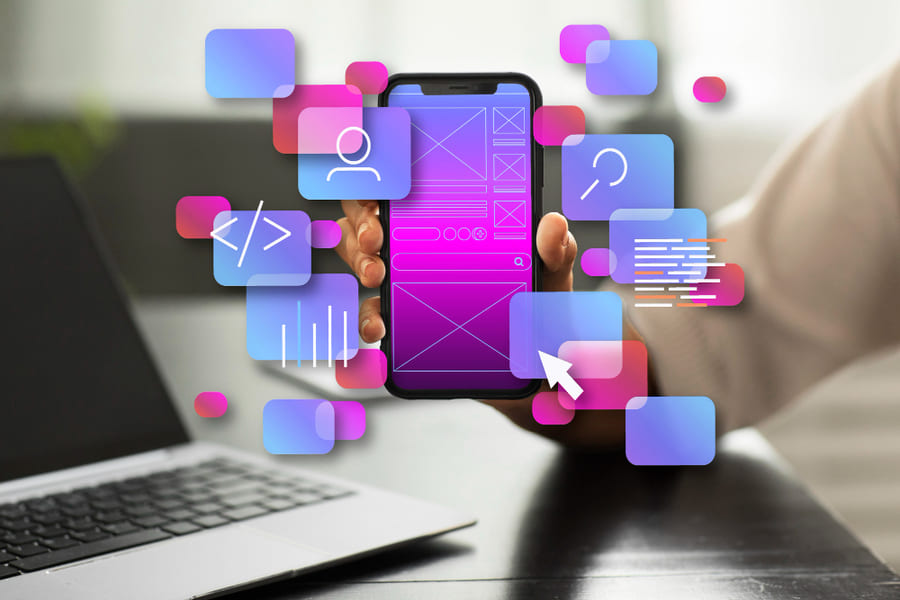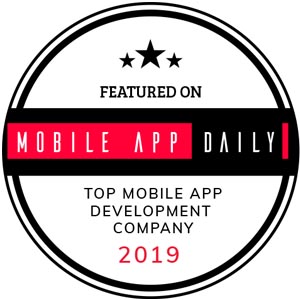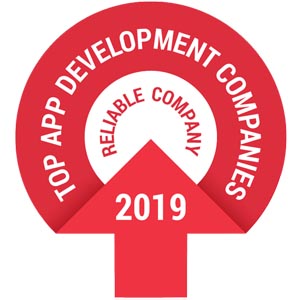The global artificial intelligence market is on a trajectory to redefine our digital world, with projections estimating its value will soar into the trillions of dollars within the next decade. Mobile technology is more than a participant in this revolution. It is proving to be a primary driver, transforming the pocket-sized devices we carry into powerful, predictive, and personalized tools.
For developers and business owners, understanding how to effectively integrate AI is no longer an option but a necessity for relevance and growth. This comprehensive guide provides a detailed roadmap for navigating the landscape of AI in mobile app development, from initial concept to future trends. It unpacks why AI in mobile app development is a game-changer and offers practical steps for implementation.
Why AI in Mobile App Development Is a Game-Changer
Artificial intelligence fundamentally alters the relationship between users and applications. Instead of providing a static, one-size-fits-all experience, AI enables apps to learn, adapt, and anticipate user needs. This creates a dynamic and deeply engaging environment that drives user satisfaction and retention.
The core advantages stem from several key capabilities:
Enhanced Personalization: AI algorithms analyze user behavior, preferences, and historical data to deliver tailored content, product recommendations, and user interfaces. This moves beyond basic customization to a truly individualized experience.
Intelligent Automation: From automating mundane tasks to powering sophisticated chatbots that offer 24/7 customer support, AI streamlines operations. This frees up human resources for more complex issues and significantly reduces operational costs.
Predictive Analytics and Insights: AI can process vast datasets to identify patterns and predict future user behavior. This allows businesses to make data-driven decisions, anticipate market trends, and proactively address customer needs before they arise.
Improved User Engagement: Features like voice recognition, image analysis, and augmented reality, all powered by AI, create more intuitive and immersive ways for users to interact with an app. This elevated experience captures user attention and fosters loyalty.
Ultimately, businesses are beginning to understand why AI in mobile app development is a game-changer. It assumes this role due to its ability to make applications smarter, more responsive, and incredibly valuable to the end-user, thereby creating a significant competitive advantage in a crowded marketplace.
Real-World Examples of AI in Mobile Apps
To appreciate its transformative impact, consider these real-world examples of AI in mobile apps across various industries. These applications demonstrate how AI is already delivering tangible value to both businesses and consumers.
E-commerce & Retail
In the e-commerce & retail sector, AI is the engine behind personalization. Amazon’s recommendation algorithm, for instance, analyzes your browsing and purchase history to suggest products you’re likely to buy. AI-powered chatbots on retail apps handle customer service inquiries, from tracking orders to processing returns, improving efficiency and user satisfaction. Visual search is another innovation that allows users to find products by simply taking a photo. The strategic use of AI in e-commerce & retail boosts sales and builds brand loyalty.
Healthcare & Fitness
The healthcare & fitness industry uses AI to provide personalized health monitoring and guidance. Apps like MyFitnessPal use machine learning to track nutrition and suggest healthier habits, while wearables paired with AI-powered apps can monitor vital signs and even detect irregularities. AI is also being used for diagnostic purposes, analyzing medical images to assist doctors in identifying diseases earlier and more accurately. The evolution of healthcare & fitness apps is a testament to AI’s potential to improve well-being.
Entertainment & Social Media
Recommendation engines are the lifeblood of the entertainment & social media landscape. Netflix and Spotify utilize sophisticated AI models to analyze your viewing and listening habits, curating personalized suggestions that keep you engaged. On platforms like Instagram and Snapchat, AI powers augmented reality filters and helps moderate content to ensure user safety. For content creators and marketers in entertainment & social media, AI provides powerful tools for understanding audience engagement and optimizing content strategy.
Finance (Fintech)
In the finance sector, AI plays a crucial role in enhancing security and facilitating personalized financial management. Banking apps use machine learning algorithms to detect fraudulent transactions in real-time, protecting users from theft. Robo-advisors offer automated, algorithm-driven investment advice, making wealth management more accessible. As fintech evolves, AI will continue to drive innovation in everything from credit scoring to personalized budgeting tools.
Of course, these real-world examples of AI in mobile apps only scratch the surface of what’s possible.
A Step-by-Step Guide to AI App Development
Integrating AI into a mobile application requires a structured and methodical approach. For any business looking to innovate, following a step-by-step guide to AI app development is crucial for success.
-
Define the Problem and Identify the Use Case
The first step isn’t about technology; it’s about strategy. Clearly define the business problem you want to solve or the user need you want to address. Will AI be used to personalize content, automate support, or provide predictive insights? A well-defined goal will guide the entire development process.
-
Data Collection and Preparation
AI models are only as good as the data they are trained on. This phase involves gathering large, high-quality datasets relevant to your use case. The data must then be cleaned, labeled, and structured—a process that is often the most time-consuming yet critical part of the project.
-
Choose the Right AI Model and Tools
You don’t always need to build a model from scratch. Developers can leverage pre-trained models and platforms, such as Google’s ML Kit or Apple’s Core ML, for common tasks like image recognition and natural language processing. For more specialized needs, custom models can be built using frameworks like TensorFlow or PyTorch.
-
Train, Test, and Validate the Model
This is an iterative process. The AI model is trained on the prepared dataset and then rigorously tested against new data to evaluate its accuracy and performance. The model is fine-tuned based on these results until it meets the required performance benchmarks.
-
Integrate the Model into the Application
Once the model is ready, it must be integrated into the mobile app. This involves deciding whether the AI processing will happen on the device (on-device AI for speed and privacy) or in the cloud (cloud AI for more complex computations). APIs are used to connect the app’s front end to the AI model on the back end.
-
Deploy, Monitor, and Iterate
After integration and final testing, the AI-powered feature is deployed to users. However, the work doesn’t stop here. It’s essential to continuously monitor the model’s performance in a real-world environment and collect new data to retrain and improve it over time.
Following a step-by-step guide to AI app development ensures robust and effective implementation. For those without in-house expertise, partnering with a skilled mobile app development company can bridge the knowledge gap.
Essential AI Technologies for Mobile Developers
Understanding the core technologies behind AI mobile app development helps developers make informed decisions about implementation strategies and tool selection.
Machine Learning Frameworks
TensorFlow Lite and Core ML lead the charge in on-device machine learning. TensorFlow Lite offers cross-platform compatibility, while Core ML provides seamless iOS integration with optimal performance. Both frameworks enable developers to run sophisticated ML models directly on mobile devices.
PyTorch Mobile has gained traction for its research-friendly approach and dynamic computation graphs, making it ideal for experimental AI features and rapid prototyping.
Natural Language Processing (NLP)
Modern mobile apps leverage NLP for chatbots, voice assistants, and sentiment analysis. Google’s ML Kit provides pre-built NLP APIs for text recognition, language identification, and translation. For more advanced implementations, developers can integrate OpenAI’s GPT models or Hugging Face transformers.
Computer Vision
AI-powered image and video analysis transforms user experiences through features like:
- Real-time object detection and recognition
- Augmented reality overlays
- Medical image analysis
- Document scanning and text extraction
OpenCV remains the go-to library for computer vision tasks, while cloud-based solutions like Amazon Rekognition and Google Vision API offer powerful image analysis without device resource constraints.
Recommendation Systems
Personalization engines use collaborative filtering, content-based filtering, and hybrid approaches to suggest relevant content. Apache Mahout and Surprise libraries provide robust recommendation algorithms, while services like Amazon Personalize offer managed solutions.
AI Ethics in Mobile App Development
As AI becomes more prevalent in mobile applications, developers must address ethical considerations that impact user trust and regulatory compliance.
Privacy and Data Protection
Mobile AI applications collect vast amounts of personal data, raising significant privacy concerns. Developers must implement:
- Data minimization principles: Collect only necessary data for AI functionality
- Transparent consent mechanisms: Clearly explain what data is collected and how it’s used
- Local processing: Use on-device AI to keep sensitive data on the user’s device
- Encryption and security: Protect data both in transit and at rest
Algorithmic Bias and Fairness
AI models can perpetuate or amplify existing biases present in training data. Mobile app developers should:
- Audit training datasets for demographic representation
- Test AI outputs across different user groups
- Implement bias detection and mitigation techniques
- Regularly retrain models with diverse, inclusive datasets
Transparency and Explainability
Users deserve to understand how AI decisions affect them. This includes:
- Providing clear explanations for AI-driven recommendations
- Allowing users to control AI features and settings
- Offering opt-out mechanisms for AI functionality
- Documenting AI decision-making processes
Accessibility and Inclusion
AI features should enhance accessibility rather than create barriers:
- Design voice interfaces that work with various accents and speech patterns
- Ensure visual recognition features support diverse populations
- Test AI functionality with users who have disabilities
- Provide alternative interaction methods
Common Challenges in AI Mobile App Development
While the potential of AI is immense, the path to implementation is not without its hurdles. Acknowledging the common challenges in AI mobile app development is the first step toward overcoming them.
Data Quality and Privacy
Sourcing sufficient high-quality, unbiased data is a major obstacle. Additionally, handling user data, especially in sensitive areas, such as healthcare and finance, raises significant privacy and security concerns that must be addressed through robust encryption and compliance with regulations like the General Data Protection Regulation (GDPR).
Algorithm Complexity and “Black Box” Problem
AI models can be incredibly complex, making it difficult to understand exactly how they arrive at a particular decision. This “black box” nature can be a problem in regulated industries where transparency is required.
Hardware and Performance Constraints
Running complex AI models directly on a mobile device can be demanding in terms of processing power and battery life. Developers must optimize models to perform efficiently without compromising the user experience.
Scarcity of Talent and High Costs
AI development requires specialized skills that are in high demand, making it difficult and expensive to build a qualified team. The costs associated with data acquisition, model training, and infrastructure can also be substantial. Understanding these common challenges in AI mobile app development allows for better planning and resource allocation.
Successfully navigating the common challenges in AI mobile app development often requires deep expertise and strategic foresight.
Emerging AI Technologies for Mobile Apps
The mobile AI landscape continues to evolve rapidly, with several cutting-edge technologies poised to reshape how we interact with our devices.
Edge AI and On-Device Processing
Edge AI represents a paradigm shift toward processing AI workloads directly on mobile devices rather than relying on cloud services. This approach offers several advantages:
- Reduced latency: Instant responses without network delays
- Enhanced privacy: Data never leaves the device
- Offline functionality: AI features work without internet connectivity
- Lower operational costs: Reduced cloud processing expenses
Modern mobile chips like Apple’s A-series processors and Qualcomm’s Snapdragon series now include dedicated AI accelerators, making sophisticated on-device AI increasingly viable.
Generative AI Integration
Large language models and generative AI are finding their way into mobile applications, enabling:
- Content creation: Apps that generate text, images, and code
- Conversational interfaces: More natural and context-aware chatbots
- Creative tools: AI-assisted design and editing applications
- Personalized experiences: Dynamic content generation based on user preferences
Federated Learning
This distributed machine learning approach allows mobile devices to collaboratively train AI models while keeping data local:
- Models improve through collective learning without data sharing
- Enhanced privacy protection for sensitive information
- Reduced bandwidth requirements compared to traditional cloud training
- Better performance on edge devices through localized optimization
Neuromorphic Computing
Inspired by the human brain’s architecture, neuromorphic chips promise unprecedented efficiency for AI workloads:
- Ultra-low power consumption for always-on AI features
- Real-time learning and adaptation capabilities
- Enhanced pattern recognition and sensory processing
- Potential for revolutionary new AI applications
Case Studies of Successful AI Integration
Examining real-world implementations provides valuable insights into effective AI mobile app development strategies.
Uber: Dynamic Pricing and Route Optimization
Uber’s mobile app demonstrates sophisticated AI integration across multiple functions:
- Dynamic pricing algorithms analyze supply and demand in real-time
- Route optimization considers traffic patterns, weather, and historical data
- Driver-rider matching uses machine learning to optimize pairing efficiency
- Fraud detection protects both riders and drivers through behavioral analysis
The result is a seamless user experience that scales globally while maintaining efficiency and safety.
Pinterest: Visual Search and Recommendation Engine
Pinterest’s AI-powered visual search revolutionized how users discover content:
- Computer vision models identify objects, scenes, and styles in images
- Recommendation algorithms suggest pins based on user behavior and preferences
- Trend prediction uses AI to surface emerging popular content
- Shopping integration connects visual discovery to e-commerce opportunities
This implementation showcases how AI can create entirely new user interaction paradigms.
Duolingo: Personalized Language Learning
Duolingo’s AI-driven approach to language education demonstrates effective personalization:
- Adaptive learning paths adjust difficulty based on individual progress
- Spaced repetition algorithms optimize memory retention
- Natural language processing evaluates pronunciation and grammar
- Engagement optimization uses reinforcement learning to maintain user motivation
The app’s success highlights how AI can make complex educational content accessible and engaging.
Banking Apps: Fraud Detection and Risk Assessment
Modern banking applications rely heavily on AI for security and user experience:
- Real-time fraud detection analyzes transaction patterns and device behavior
- Credit scoring incorporates alternative data sources and ML models
- Chatbot assistance handles routine inquiries with natural language understanding
- Investment advice provides personalized recommendations based on risk profiles
These implementations demonstrate AI’s critical role in financial services’ digital transformation.
AI Development Frameworks and Tools
Choosing the right development tools significantly impacts the success of AI mobile app projects.
Cross-Platform Frameworks
Flutter with TensorFlow Lite offers a compelling combination for AI-powered mobile apps:
- Single codebase for iOS and Android
- Optimized performance for on-device AI
- Rich ecosystem of pre-built ML models
- Strong community support and documentation
React Native with ML Kit provides another viable option:
- JavaScript-based development workflow
- Google’s ML Kit integration for common AI tasks
- Hot reloading for rapid development cycles
- Extensive third-party library ecosystem
Cloud-Based AI Services
AWS Mobile SDK integrates seamlessly with Amazon’s AI services:
- Amazon Rekognition for image and video analysis
- Amazon Comprehend for natural language processing
- Amazon Personalize for recommendation systems
- Amazon Lex for conversational interfaces
Google Cloud AI Platform offers comprehensive mobile AI capabilities:
- AutoML for custom model training
- Vision AI for image analysis
- Natural Language AI for text processing
- Translation AI for multilingual support
Development and Testing Tools
MLflow provides end-to-end ML lifecycle management:
- Experiment tracking and model versioning
- Model packaging and deployment
- Performance monitoring and comparison
- Integration with popular ML frameworks
Weights & Biases offers advanced experiment tracking:
- Real-time metrics visualization
- Hyperparameter optimization
- Collaborative model development
- Production monitoring capabilities
Performance Optimization for AI Mobile Apps
Optimizing AI performance on mobile devices requires careful consideration of hardware limitations and user expectations.
Model Optimization Techniques
Quantization reduces model size and improves inference speed:
- Convert 32-bit floating-point weights to 8-bit integers
- Maintain accuracy while significantly reducing memory usage
- Enable deployment on resource-constrained devices
- Accelerate inference through specialized hardware support
Pruning removes unnecessary model parameters:
- Eliminate connections with minimal impact on accuracy
- Reduce model complexity and computational requirements
- Enable faster inference and lower power consumption
- Maintain performance while decreasing storage needs
Knowledge Distillation creates smaller, efficient models:
- Train compact models to mimic larger, more accurate ones
- Preserve essential knowledge while reducing complexity
- Optimize for mobile deployment without sacrificing quality
- Enable real-time inference on edge devices
Battery and Performance Management
Effective AI mobile apps balance functionality with device resource consumption:
- Adaptive processing: Adjust AI complexity based on battery level and device capabilities
- Efficient scheduling: Run intensive AI tasks during charging or idle periods
- Caching strategies: Store frequently used AI outputs to reduce computation
- Progressive enhancement: Provide basic functionality that improves with available resources
The Future of AI in Mobile Apps
Looking ahead, the future of AI in mobile apps promises even more seamless and intelligent integration into our daily lives. Several key trends are shaping this evolution.
Advanced Personalization and Contextual Awareness
Future AI mobile applications will leverage multiple data sources to create hyper-personalized experiences:
- Contextual computing will use location, time, weather, and social signals
- Cross-app intelligence will enable AI systems to learn from user behavior across multiple applications
- Predictive interfaces will anticipate user needs and adapt in real-time
- Emotional AI will recognize and respond to user emotional states
Augmented Reality and Spatial Computing
The convergence of AI and AR technologies will create new interaction paradigms:
- Intelligent object recognition will provide contextual information about the physical world
- Spatial mapping will enable AI to understand and interact with 3D environments
- Gesture recognition will allow natural, intuitive control of AI features
- Mixed reality experiences will blend digital AI assistants with physical spaces
Autonomous AI Agents
Mobile devices will host intelligent agents capable of complex task completion:
- Multi-step workflows executed autonomously based on user goals
- Cross-platform integration allowing AI agents to work across different apps and services
- Learning from user patterns to improve task execution over time
- Proactive assistance that anticipates needs before explicit requests
One trend is the move toward on-device AI. As mobile processors become more powerful, an increasing number of AI computations will be performed directly on the user’s device. This reduces latency, enhances privacy by keeping data local, and allows apps to function even without an internet connection. Another exciting frontier is the rise of generative AI within apps, which will enable applications to create original content, from text and images to code, opening new possibilities for creativity and productivity tools.
Hyper-personalization will also reach new heights. Future apps will not just react to your behavior but will proactively anticipate your needs, offering suggestions and automating tasks before you even think to ask. Ultimately, the future of AI in mobile apps is one where technology becomes an invisible, intelligent partner. Successfully navigating this future requires a forward-thinking mobile app development company that can turn these possibilities into reality.
This technological evolution underscores once more why AI in mobile app development is a game-changer, positioning it as the central pillar of next-generation mobile experiences.
Getting Started with AI Mobile App Development
For developers and businesses ready to embark on their AI mobile app journey, here’s a practical roadmap to begin implementation:
Assessment and Planning
Start by evaluating your current capabilities and defining clear objectives:
- Audit existing technical infrastructure and development team skills
- Identify specific user problems that AI can solve effectively
- Research competitors and analyze successful AI implementations in your industry
- Define success metrics and key performance indicators
Skill Development and Team Building
Building AI capabilities requires strategic investment in talent:
- Upskill existing developers through AI and machine learning courses
- Hire specialized talent in data science and AI engineering
- Partner with experienced consultants for initial projects
- Establish continuous learning programs to stay current with AI trends
Technology Selection and Implementation
Choose tools and frameworks that align with your project requirements:
- Evaluate cloud vs. on-device processing based on privacy and performance needs
- Select appropriate AI frameworks considering your team’s expertise
- Plan for scalability and future feature expansion
- Implement robust testing procedures for AI functionality
Let’s Get Started on Your Mobile App
Integrating artificial intelligence is a complex but rewarding journey that can unlock unprecedented value and innovation for your mobile application. If you’re ready to explore how AI can transform your digital strategy, we’re here to help. As a leading mobile app development company, we can collaborate with you on bringing your vision to life.
The convergence of AI and mobile technology represents one of the most significant opportunities for businesses to differentiate themselves and provide exceptional user experiences. Whether you’re looking to implement simple automation features or develop sophisticated AI-powered applications, the key is starting with a clear strategy and the right technical expertise.
Reach out to our team of experts, and let’s discuss your idea and how we can harness the power of technology to realize your goals.

Split Reef is a modern, results-driven digital organization always ready to support clients in their search for digital supremacy. With Split Reef, your budget isn’t going to hold you back from partnering with us to make your project successful. Our offices are located in Columbus, Ohio and Jacksonville, Florida.


















